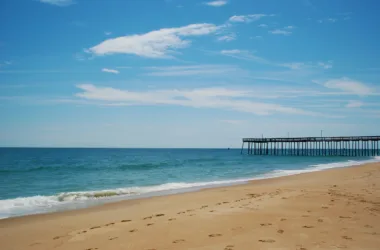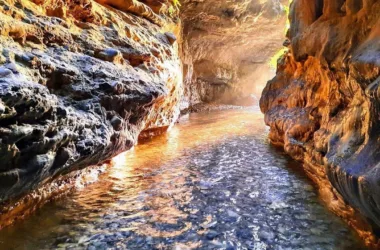Sapa is a beautiful town in northern Vietnam. It’s known for its stunning terraced rice fields, lush mountains, and vibrant local culture. A visit to Sapa offers a chance to immerse yourself in the daily lives of ethnic minorities like the Hmong and Dao.
The Terraced Rice Fields of Sapa
One of the highlights of Sapa is its terraced rice fields. They cascade down the hillsides, creating a breathtaking landscape. Visitors can trek through the fields and witness the traditional farming methods that have been used for generations.

The Sapa Market: A Feast for the Senses
The Sapa market is a vibrant place where locals and tourists come together. You’ll find a wide range of goods, from colorful textiles and handmade crafts to fresh produce and spices. It’s a great place to pick up souvenirs and experience the local culture.
Trekking Adventures in Sapa
Sapa is a trekker’s paradise, with numerous trails winding through the hills and valleys. Whether you’re an experienced hiker or just looking for a leisurely stroll, there’s something for everyone. Don’t miss the opportunity to trek to some of the nearby villages and experience traditional hospitality.

A Comfortable Stay in Sapa
After a day of exploring, you’ll find plenty of accommodation options in Sapa. From cozy homestays to luxury resorts, there’s something to suit every budget and preference. Many accommodations offer stunning views of the surrounding landscape.
Sapa’s Unique Climate
Sapa has a unique climate, with four distinct seasons. The cool weather and occasional mist give the town a magical feel. Each season brings its own beauty, from the lush green of the rice fields in summer to the vibrant colors of the autumn foliage.

How to Get to Sapa
Sapa is easily accessible from Hanoi, the capital of Vietnam. You can take a train or bus from Hanoi to Lao Cai, and then a short drive to Sapa. The journey offers breathtaking views of the countryside and is a great way to start your adventure.
Tips for Visiting Sapa
When visiting Sapa, be sure to pack appropriately for the weather. It can be cool in the evenings, even in the summer. Also, be respectful of the local culture and customs. Many ethnic minorities live in the area, and it’s important to be mindful of their traditions.

A Journey of Discovery
In conclusion, Sapa is a must-visit destination for anyone looking to experience the beauty and culture of northern Vietnam. From the stunning rice fields to the vibrant markets and friendly locals, Sapa offers a unique and unforgettable experience.
Similar Articles
- Da Nang: A Coastal Paradise in Vietnam
- Phong Nha-Ke Bang National Park
- Nha Trang: Vietnam’s Premier Beach Destination and Cultural Hub
Frequently Asked Questions (FAQs) about Sapa
1. Where is Sapa located?
Sapa is located in the northern part of Vietnam, near the border with China. It is situated in the Lào Cai Province, approximately 380 kilometers northwest of Hanoi.
2. What is the best time to visit Sapa?
The best time to visit Sapa depends on your preferences. The weather is generally cool and comfortable from September to November and from March to May. These periods also coincide with the harvest season for rice, which is a spectacular sight.
3. How do I get to Sapa?
Sapa is accessible from Hanoi by train, bus, or private car. The train journey takes around 8 hours, and the bus journey takes about 6 hours. Both options offer beautiful views of the countryside.
4. What are the must-see attractions in Sapa?
Some of the must-see attractions in Sapa include the terraced rice fields, the Fansipan Mountain (the highest peak in Vietnam), the Sapa Market, and the nearby ethnic minority villages such as Cat Cat and Ta Phin.
5. What activities can I do in Sapa?
Sapa offers a wide range of activities for visitors. You can go trekking through the rice fields and hills, visit ethnic minority villages, shop at the local markets, or simply enjoy the stunning views and cool climate.
6. What is the weather like in Sapa?
Sapa has a temperate climate with four distinct seasons: spring, summer, autumn, and winter. The weather can be quite cool and misty, especially in the evenings and early mornings.
7. Do I need a guide for trekking in Sapa?
While it’s possible to trek in Sapa without a guide, hiring a local guide can enhance your experience. They can provide valuable insights into the local culture and customs, help you navigate the trails, and ensure your safety.
8. What should I pack for a trip to Sapa?
When visiting Sapa, it’s essential to pack appropriately for the weather. Be sure to bring warm clothing, especially if you’re traveling during the cooler months. Comfortable walking shoes, a rain jacket, and a hat are also recommended.
9. What is the local cuisine like in Sapa?
Sapa is known for its delicious and diverse local cuisine. Some popular dishes include grilled fish, barbecued meats, hotpot, and sticky rice. Don’t miss the opportunity to try some of the local specialties.
10. Is it safe to travel to Sapa?
Sapa is generally considered a safe destination for travelers. However, it’s always essential to take precautions and be aware of your surroundings, especially when trekking in remote areas.
Conclusion
Sapa is a beautiful and unique destination that offers something for everyone. Whether you’re interested in trekking, exploring local culture, or simply enjoying the stunning views, Sapa has something to offer. We hope this FAQ has answered some of your questions and helped you plan your trip to this beautiful region of Vietnam.









